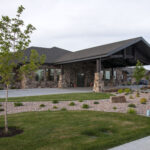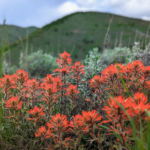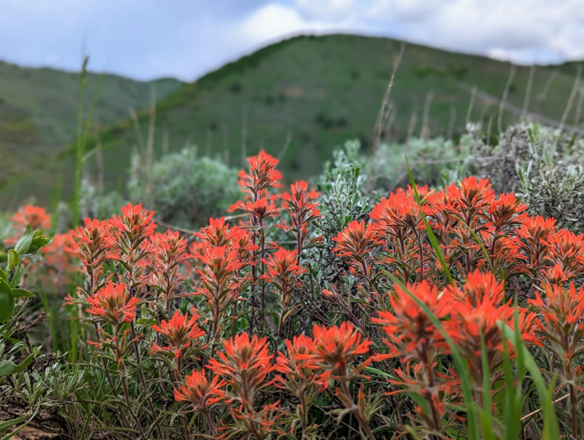
Figure 1: Utah native plant Indian Paintbrush, Castilleja angustifolia, blooms in the hills near Huntsville, Utah. Photo Credit: Abby Roberts
As water becomes more precious in the Intermountain West, we find ourselves looking for plants with drought tolerance, ease of care, and the ability to survive harsh winters. The answer? Natives. Native plants have been evolving in their regions and adapting to their ecosystems since before European settlement. They have been naturally selecting season after season and year after year the characteristics that would secure the future survival of the species. The traits that native plants have developed naturally are qualities that we are now looking for in landscape plants.
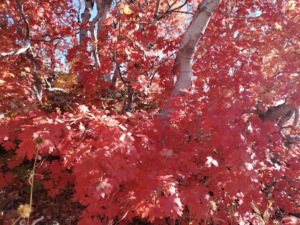
Figure 2: Utah native plant Acer grandidentatum, Bigtooth Maple, shows off its fall foliage in the hills above Porcupine Reservoir. Photo credit: Abby Roberts
The two main stumbling blocks for the use of natives in the landscape are appearance and availability. For many people, the first image that comes to mind when we start speaking of native plants is wild, weedy-looking shrubs and grasses with patches of bare earth in between. This is a far cry from the well-groomed, deeply green lawns and hedges that have been the ideal for so long. But natives are beautiful, wide ranging, and have much to offer our intermountain landscapes.
Another problem with using native plants has been availability. In the past, few nurseries have had sections devoted to native plants. But as demand has increased, more natives are becoming available for purchase. A nice selection of firs, maples, serviceberries, yarrow, columbine, and lupine are now available on the market, and that’s just scratching the surface. Be sure to look for native plants at your local nursery and request native plants in your landscape design.
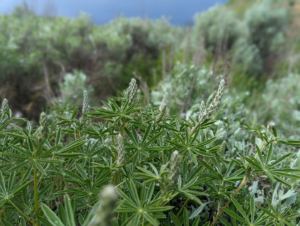
Figure 3: Utah native plant Lupinus caudatus, Tailcup Lupine, in bud in the hills above Huntsville, Utah. Photo Credit: Abby Roberts
To learn more about native plants, the following resources are great places to start:
EcoRestore Utah Portal | Extension | USU
Utah Native Plant Society – A non-profit organization for the study and conservation of Utah native plants (unps.org)
Conservation Garden Park
Plant Select – Smart plants inspired by the Rocky Mountain region
Progressive Plants
Utah Native Plants – Millcreek Gardens
Water-wise and Native Plants Resources | USU
